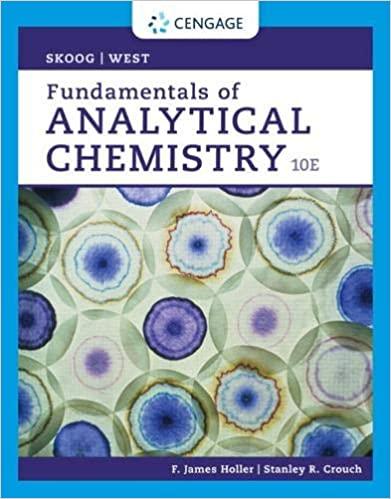Question
1a. In a laboratory experiment, a student found that a 103 -mL aqueous solution containing 2.987 g of a compound had an osmotic pressure of
1a.
In a laboratory experiment, a student found that a 103-mL aqueous solution containing 2.987 g of a compound had an osmotic pressure of 25.1 mmHg at 298 K. The compound was also found to be nonvolatile and a nonelectrolyte. What is the molar mass of this compound?
____g/mol
1b.Osmotic pressure, , is calculated according to the equation,
= cRTi
Where: = Osmotic Pressure in atmospheres = 3.30310-2 atm c = molarity of solute R = Ideal gas constant = 0.0821 L atm mol-1 K-1 T = Kelvin temperature = 298 K i = van't Hoff factor = 1 for a nonelectrolyte
Calculate the molarity of solute.
c = _______mol/L
1c. Use the solution volume and calculated molarity to determine the amount (mol) of solute present in the sample. molarity = 1.35110-3 mol/L volume = 0.1030 L
_______ mol unknown solute
1d. Divide the mass (g) of unknown by the amount (mol) present to determine the molar mass (g/mol) of the unknown. Mass unknown = 2.987 g amount (mol) unknown = 1.39110-4 mol
________g/mol
Step by Step Solution
There are 3 Steps involved in it
Step: 1

Get Instant Access to Expert-Tailored Solutions
See step-by-step solutions with expert insights and AI powered tools for academic success
Step: 2

Step: 3

Ace Your Homework with AI
Get the answers you need in no time with our AI-driven, step-by-step assistance
Get Started


